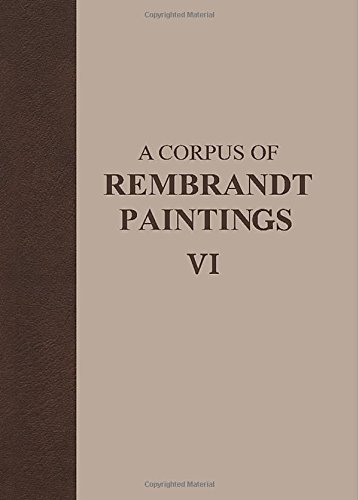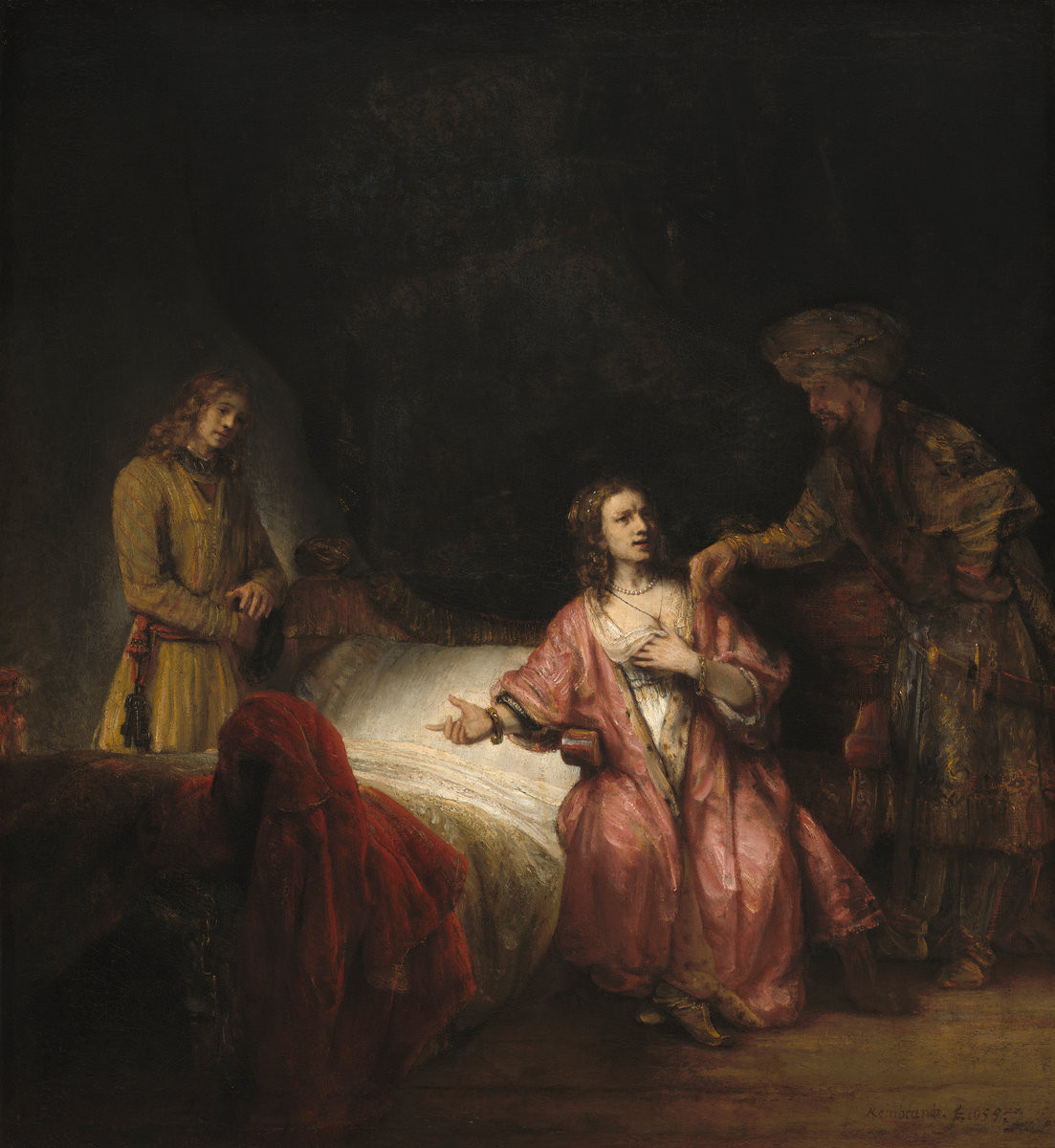 |
| Picture: Amazon |
Ernst van de Wetering A Corpus of Rembrandt Paintings Volume VI Springer 2014 £899.50
This is the final volume of the Corpus of Rembrandt Paintings, the result of a collaborative research project that has been running since 1968. This one's written by Ernst van de Wetering, the greatest living Rembrandt scholar, but it's the culmination of many lives' work by entire teams of scholars. The first five volumes, now available free online, set new standards in art publishing for the depth and quality of their analysis. In the latest volume van de Wetering explains the tensions within the team and the change of course when he took over. It remains a controversial undertaking, and I'm still sceptical of many of the attributions (and disattributions), but I fervently admire the enterprise. The final volume is a summary catalogue raisonné, reprising the authentic Rembrandts from previous volumes and adding new discoveries and pictures not previously discussed.
It is a massive and massively expensive volume, and it should have been the greatest art book ever published. It is not. As the conclusion of almost half a century's toil it is a travesty; unacceptably partial and intolerably sloppy. It does have some considerable merits. Large high quality illustrations of all the attributed works are excellent, and the detailed pictures and reconstructions of cut-down works are particularly appreciated. Some of the catalogue entries are outstanding; closely argued, well documented and worthy of the project. And I found the personal account of the history of the Rembrandt Research Project revelatory. But these laudable features don't compensate for its shortcomings.
I understand the decision to present in summary form pictures previously catalogued, especially as all are now available free online, but many of the most interesting and controversial pictures are only discussed in this volume. They deserve - and need - fuller and more consistent treatment. We don't even get provenance, or consistent assessment of condition, which was one of the greatest merits of earlier volumes. Attributions of some pictures like the so-called Auctioneer in New York are argued at great length, but others like the Small Portrait of Margaretha de Geer which is disputed (wrongly in my view) are accepted almost without comment. And the small Oil Sketch of an Old Man (number 238, private collection) is attributed partly because of its relationship to a drawn copy attributed to Eeckhout, but also on the basis of brief subjective assertion of its quality. I think subjectivity is unavoidable and not blameworthy, but these comments are at odds with the attempted objectivity of other entries, and the implied certainty underlying a catalogue that gives precisely 324 surviving pictures to Rembrandt's own hand.
It is a massive and massively expensive volume, and it should have been the greatest art book ever published. It is not. As the conclusion of almost half a century's toil it is a travesty; unacceptably partial and intolerably sloppy. It does have some considerable merits. Large high quality illustrations of all the attributed works are excellent, and the detailed pictures and reconstructions of cut-down works are particularly appreciated. Some of the catalogue entries are outstanding; closely argued, well documented and worthy of the project. And I found the personal account of the history of the Rembrandt Research Project revelatory. But these laudable features don't compensate for its shortcomings.
I understand the decision to present in summary form pictures previously catalogued, especially as all are now available free online, but many of the most interesting and controversial pictures are only discussed in this volume. They deserve - and need - fuller and more consistent treatment. We don't even get provenance, or consistent assessment of condition, which was one of the greatest merits of earlier volumes. Attributions of some pictures like the so-called Auctioneer in New York are argued at great length, but others like the Small Portrait of Margaretha de Geer which is disputed (wrongly in my view) are accepted almost without comment. And the small Oil Sketch of an Old Man (number 238, private collection) is attributed partly because of its relationship to a drawn copy attributed to Eeckhout, but also on the basis of brief subjective assertion of its quality. I think subjectivity is unavoidable and not blameworthy, but these comments are at odds with the attempted objectivity of other entries, and the implied certainty underlying a catalogue that gives precisely 324 surviving pictures to Rembrandt's own hand.


This volume, unlike the others, almost wholly ignores rejected paintings. So the great Washington Lucretia gets barely a mention because it is rejected - although so far as I'm aware every other authority has always given it to Rembrandt. Its rejection seems based on the premise that Rembrandt's business turned out free studio variants of his compositions. Volumes V and VI illustrate a sample of originals with purported studio variants, some close (e.g. Joseph Accused by Potiphar's Wife in Berlin, by Rembrandt, left, and studio version in Washington, right) and others very free (e.g. the composition of Rembrandt's Danae turned into a Jacob and Esau attributed to Ferdinand Bol). Van de Wetering seems so wedded to this idea that he insists that the Washington Lucretia must be a student's version of the St Louis version. The Washington picture does have certain faults in foreshortening, but many great artists made mistakes like that. I find it incomprehensible that an artist of Aert de Gelder's limited gifts could be mooted as the creator of this masterpiece.
Whilst van de Wetering rejects certain good finished pictures because he believes Rembrandt would have produced only one version of each major composition, he attributes a number of weak pictures to Rembrandt because he believes they are preparatory studies. Assumptions about Rembrandt's working methods seems to determine some rather questionable results, such as a presumed sketch for the Jewish Bride in the Met and a sketch for an unrealised engraved portrait in Winterthur.
There are also numerous careless errors that should have been caught by careful proof reading (I give examples in my list of newly attributed pictures, starting with the Corpus's own faulty list!). They would be easily forgiven if it were not for the monumental nature of the undertaking. If nothing else, its massive cost entitles us to expect better.
My final objection is that there is no proper account of methodology, or account of van de Wetering's conception of Rembrandt, Instead there is a truly bizarre section about a statistician, where van de Wetering claims to espouse a Bayesian methodology. Bayesianism is an influential and important approach to statistics, which produces some superficially surprising results. It is not difficult to understand, but I can't find a good short summary online (if you want to know more, Nate Silver has a great simple chapter on it in this book). I thought it rather promising in the context of Rembrandt attribution, because among its characteristics are reasoning with prior assessments of probability (i.e. trying to account for one's own initial prejudices) and probabilistic reasoning, rather than the yes or no results of alternative frequentist statistics. Van de Wetering seems to think that piling up separate pieces of evidence builds a Bayesian case for certain attribution, assembling several pieces of evidence to establish that a picture either is or is not by Rembrandt. In fact the very nature of the undertaking is profoundly frequentist (that is, the opposite of Bayesian); it lists the pictures that are by Rembrandt. No probabilities are assigned, no grey areas are acknowledged.
My final objection is that there is no proper account of methodology, or account of van de Wetering's conception of Rembrandt, Instead there is a truly bizarre section about a statistician, where van de Wetering claims to espouse a Bayesian methodology. Bayesianism is an influential and important approach to statistics, which produces some superficially surprising results. It is not difficult to understand, but I can't find a good short summary online (if you want to know more, Nate Silver has a great simple chapter on it in this book). I thought it rather promising in the context of Rembrandt attribution, because among its characteristics are reasoning with prior assessments of probability (i.e. trying to account for one's own initial prejudices) and probabilistic reasoning, rather than the yes or no results of alternative frequentist statistics. Van de Wetering seems to think that piling up separate pieces of evidence builds a Bayesian case for certain attribution, assembling several pieces of evidence to establish that a picture either is or is not by Rembrandt. In fact the very nature of the undertaking is profoundly frequentist (that is, the opposite of Bayesian); it lists the pictures that are by Rembrandt. No probabilities are assigned, no grey areas are acknowledged.
The Rembrandt Research Project has been immensely controversial and its early parsimony is now virtually universally rejected, not least by van de Wetering himself. But I'm still a great fan of the undertaking. Never has an artist been so comprehensively studied, and the exercise has paid great dividends both in its direct discoveries and its indirect spur to other scholars critical of its approach. The Corpus is a monument of art publishing, and volumes IV and V (on the small history paintings and the self-portraits) are in my view two of the greatest art books ever written. But the final volume is an ignominious ending.
I find it difficult to bring your enthusiasm for the RRP together with your criticsm and concluding words. And I would really like to know why you think vols. IV and V are monuments of art history (because of their size?). Judging by my own research on the modest scale of a single painting (formerly Bredius 431, then C51, now A86), the work of the RRP is a scandal. First the sloppy disattribution, then, 25 years later, lame excuses, and finally a hypothesis that makes Rembrandt in 1632, at the first peak of mastery, a studious illustrator of art theory ("Kamerlicht"? which interior scene does not feature it?). Anyone consulting that weighty tome and looking for information about the picture, much less a discussion of the iconography (it's a small "history painting", isn't it?), is going to be mightily disappointed. They will have to read my article, which is generously cited (but not discussed) by EvdW in a footnote, and now available in English in the painting's file at the Rembrandt Database (thank god for web!)
ReplyDeletehttps://rkd.nl/en/explore/technical/5007260.
Thank you. I think the balance of my comments were critical, but the thorough investigation is admirable. Some of the physical description is particularly valuable, such as the Norton Simon self-portrait which went from being a studio picture in good condition to an original in poor condition. But overall I think I agree with you, and will read your article.
Delete